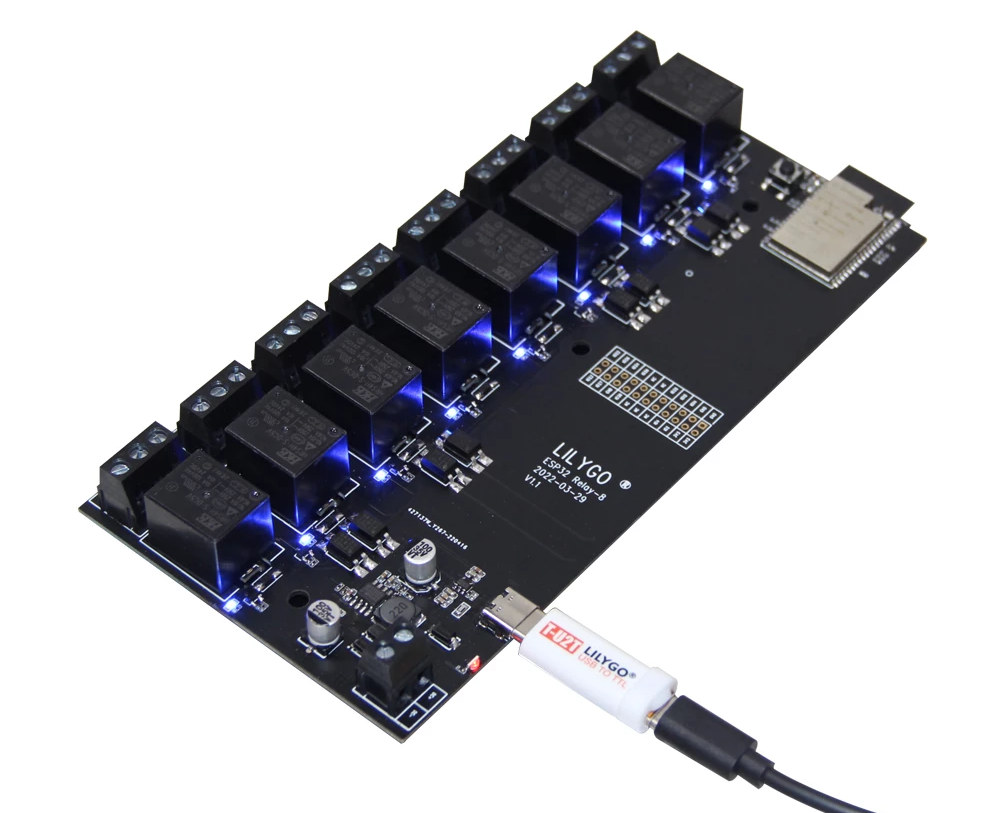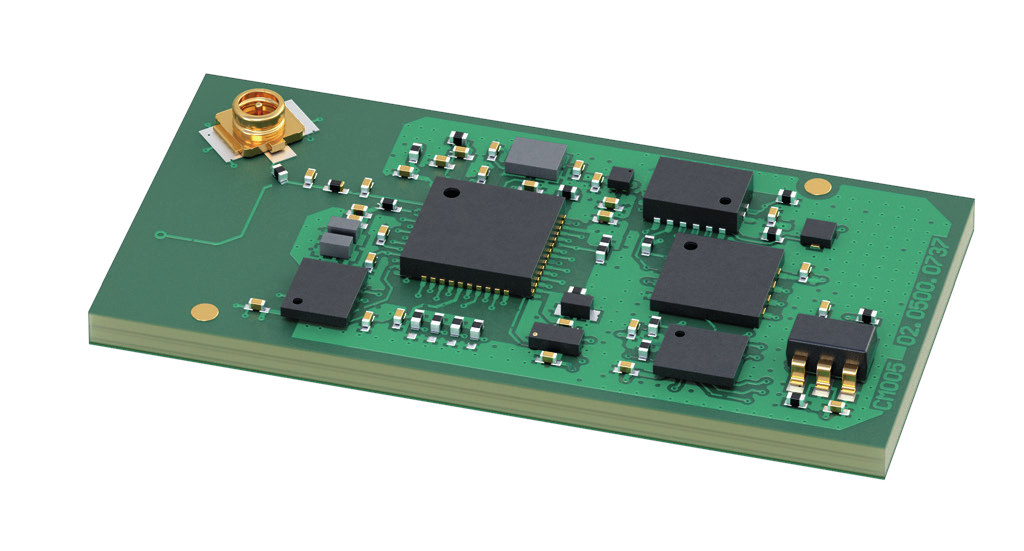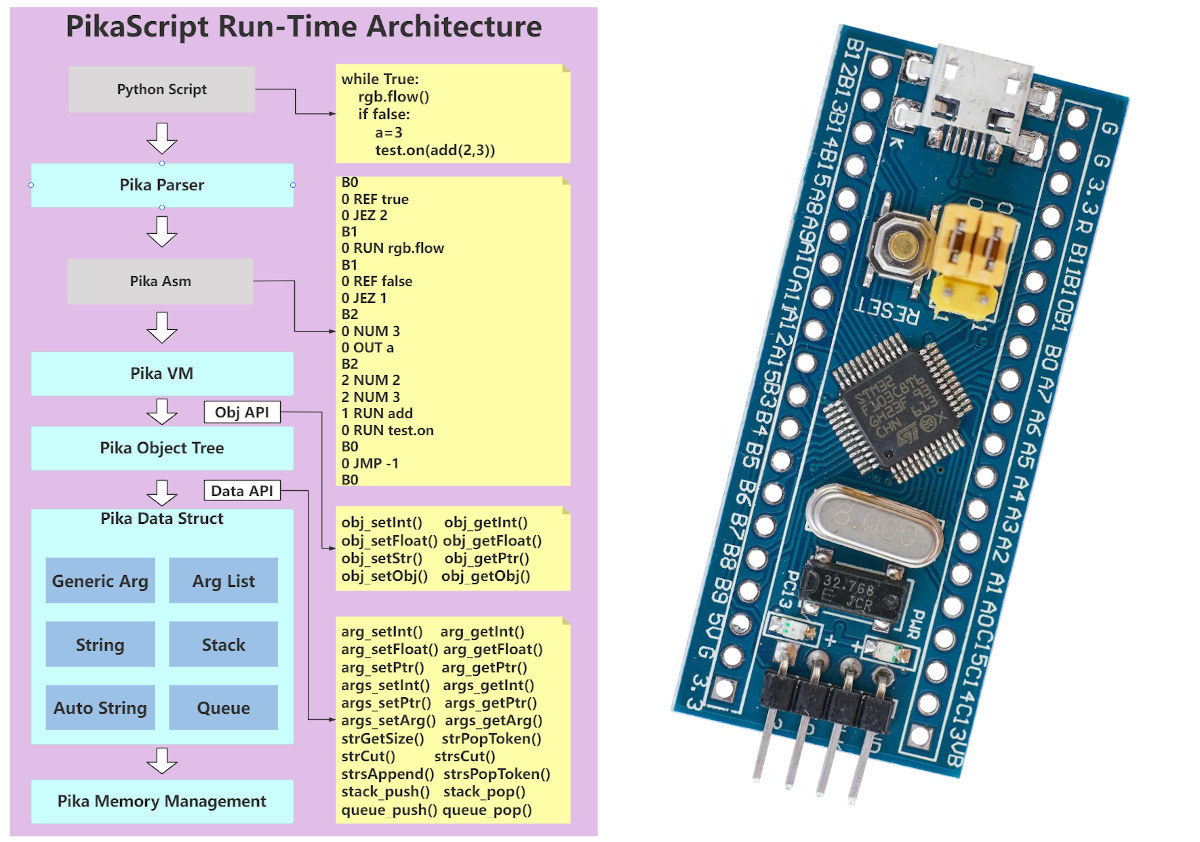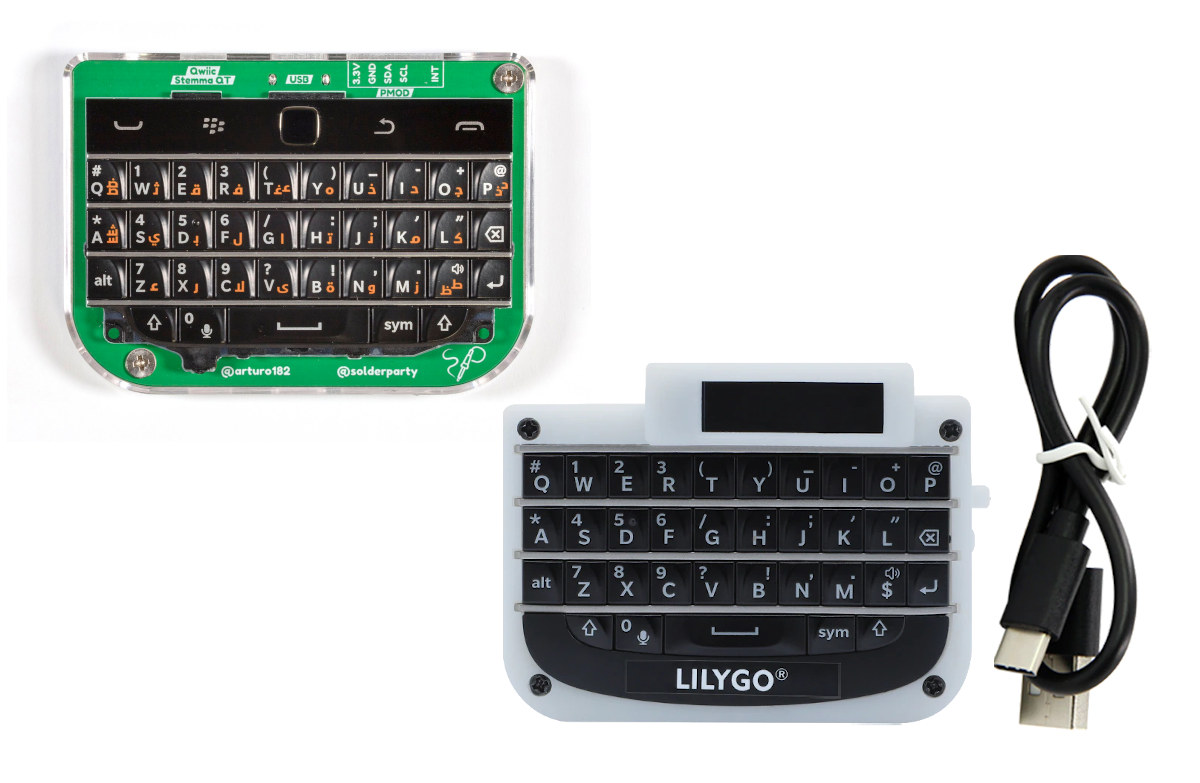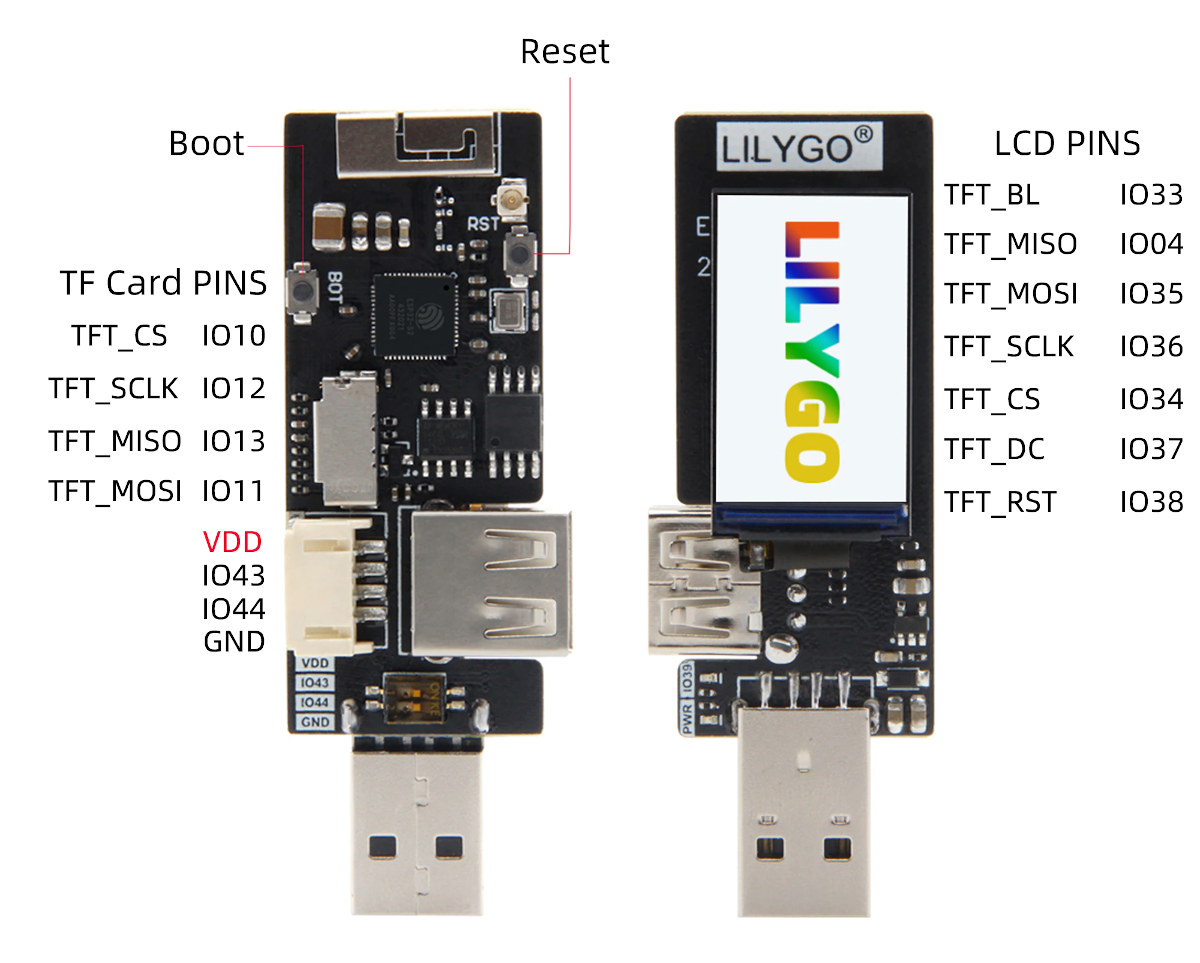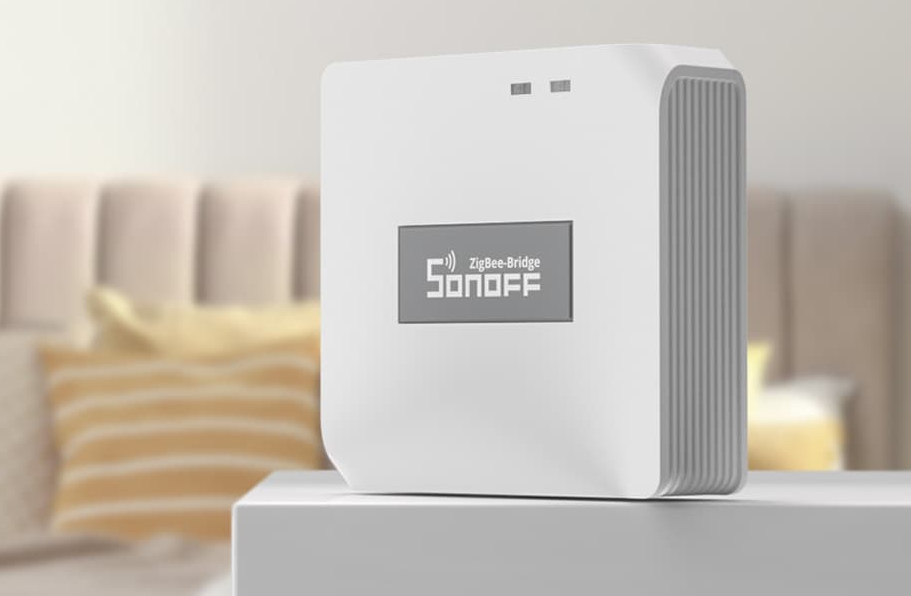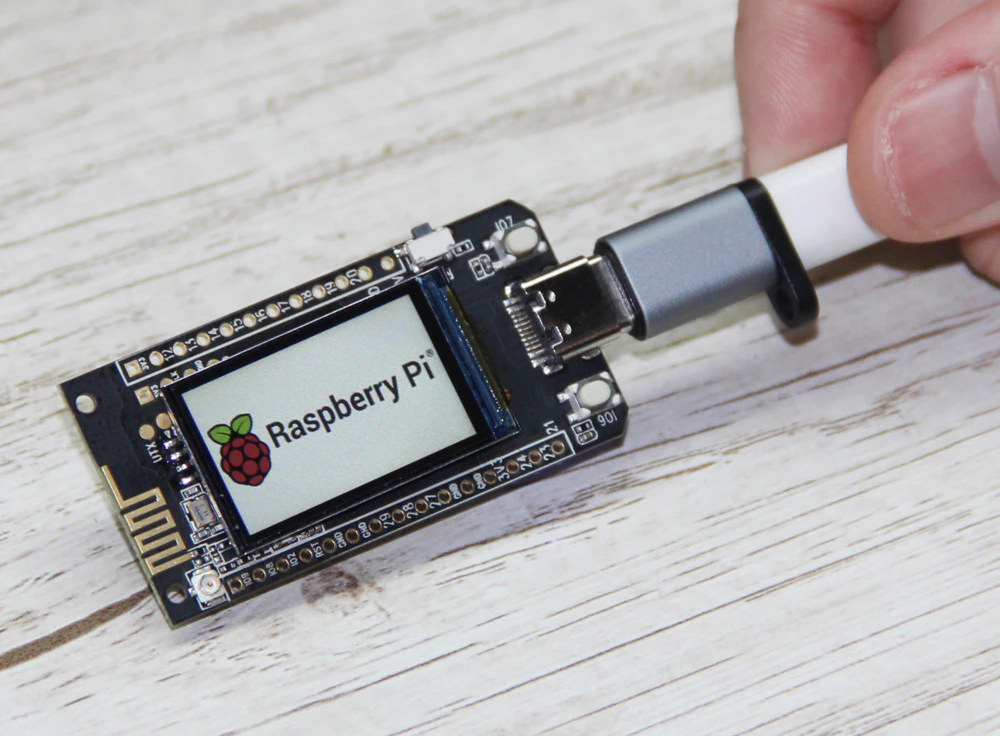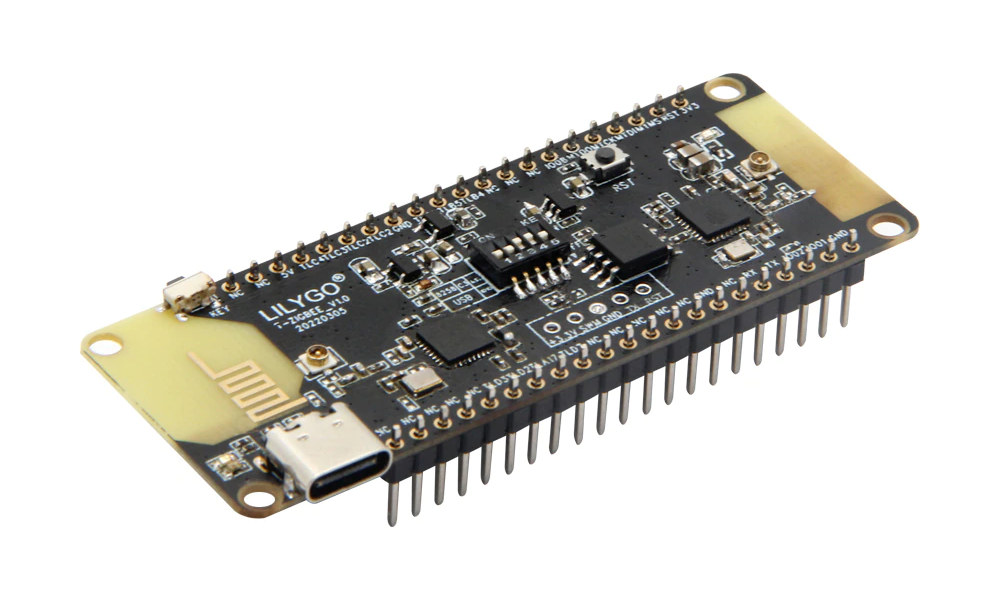LilyGo T-Relay-8 is an ESP32 WiFi & BLE board equipped with eight 5V relays supporting up to 250V AC or 28V DC, as well as 16-pin GPIO header for expansion. The board offers a more compact solution than the usual two-board setups with an ESP32 board and a separate 8-relay “Arduino” module, and also integrates optocouplers for improved safety. LilyGo T-Relay-8 specifications: Wireless module – ESP32-WROVER-E module with ESP32 dual-core processor with 2.4 GHz WiFi 4 and Bluetooth 4.2 connectivity, 4MB flash, 8MB PSRAM Relays – 8x HRS4H-S-DC5V 5V relays up to 250VAC/10A or 28VDC/10A with octocoupler isolation, blue LEDs for status Expansion – 16-pin header (unpopulated) with GPIOs, 3.3V, and GND USB – 1x USB Type-C for programming via optional T-U2T dongle via CH9102 USB to TTL chip Misc – Reset button, red user LED Power Supply – 12V to 24V via 2-pin terminal block Dimensions – 17 x […]
OSM Size-0 solder-on LGA module comes with ESP32 WiFi & BLE MCU
German embedded systems company iesy’s ESP32 OSM-0F is an ESP32-based solder-on LGA system-on-module that complies with SGET OSM Size-0 (30x15mm) form factor, offers WiFi and Bluetooth connectivity, and more. The SGET Open Standard Module (OSM) standard defines four module sizes, namely Size-0 (30x15mm), Size-S (30x30mm), Size-M (45x30mm), and Size-L (45x45mm), and all the modules we’ve covered so far were powered by a Linux-capable processor. But it’s more challenging, albeit not impossible, to design a Linux-capable OSM Size-0 module, and that form factor is better suited to microcontroller-class chips like ESP32. (Technically, ESP32 can run Linux, but it’s more for show that any practical applications) ESP32 OSM-0F specifications: Microcontroller – Espressif ESP32 dual-core Xtensa LX6 MCU @ 240 MHz with 512KB RAM, Wi-Fi 802.11 b/g/n and Bluetooth/BLE Storage – 32 Mbit SPI flash Antenna – u.FL connector 188 LGA contact points with Storage – SDIO Networking – 1x 10/100M Ethernet (RMII), […]
PikaScript – A lightweight Python implementation that runs on STM32 and other low-end MCUs
PikaScript is an ultra-lightweight Python engine that can run on microcontrollers with as little as 4KB of RAM and 32KB of Flash, while the more popular MicroPython requires at least 256kB of code space and 16kB of RAM. PikaScript was initially developed to run on STM32G030C8 and STM32F103C8 MCUs, meaning, for example, it works on the BluePill board, but it has also been ported to other platforms like WCH CH582 RISC-V MCU, WinnerMicro W806 C-Sky microcontroller, as well as other like Raspberry Pi RP2040, ESP32-C3, etc… but those are not quite as well supported with some features missing. PikaScript also permits the binding C function to a Python module through Pika Pre-compiler. PikaScript can run bare metal on the microcontroller, but also supports real-time operating systems such as RT-Thread and VSF (Versaloon Software Framework), as well as Linux. Just like MicroPython, it’s using a subset of Python 3, but I’d […]
Mini keyboards launched with ESP32-C3 or Raspberry Pi RP2040 MCU
Last week, when I saw LilyGO T-Keyboard based on ESP32-C3, I didn’t think much of it and did not expect many people to be interested, so I skipped it. But earlier today I also noticed Solder Party launched a very similar-looking product – the BB Q20 Keyboard with Trackpad – based on Raspberry Pi RP2040 MCU. So after all, it might be worthwhile to look into those mini keyboards for makers. LilyGO T-keyboard Hardware specifications: SoC – ESP32-C3 single-core RISC-V processor with Wi-Fi 4 and Bluetooth 5.0 LE connectivity Display – 0.99-inch TFT color LCD QWERTY keyboard Battery – 400mAh built-it battery Power Supply – 5V via USB port Dimensions – 6.9 x 5.3 x 1.7 cm The company promotes it as a mini Bluetooth keyboard for iOS and Android smartphones, as well as Windows machines, but also has plans to make it work with their T-Echo LoRa messaging hardware. […]
T-Dongle ESP32-S2 WiFi development board comes with two USB OTG ports
LilyGO has been very busy in recent weeks, and their latest product is the “T-Dongle ESP32-S2” development board that looks very much like Espressif ESP32-S3-USB-OTG board development board but is equipped with the single-core WiFi-only ESP32-S2 processor instead of the dual-core ESP32-S3 SoC with WiFi 4 and Bluetooth 5.0. The T-Dongle ESP32-S2 board is designed for the development of USB applications and comes with USB OTG female and male ports, as well as the same 1.14-inch color display found on T-Display RP2040/ESP32 and T-PicoC3 boards. T-Dongle ESP32-S2 development board specifications: Wireless SoC – Espressif Systems ESP32-S2 single-core Xtensa LX7 processor @ up to 240 MHz with 320 kB SRAM, 128 kB ROM, WiFi 4 connectivity Antennas – 3D antenna, IPEX antenna connector Storage – MicroSD card socket Display – 1.14-inch full-color IPS LCD Display (ST7789V SPI controller) with 240 x 135 resolution USB 1x USB OTG female port to connect […]
SONOFF Zigbee Bridge Pro gateway supports up to 128 sub-devices
ITEAD has just introduced the SONOFF Zigbee Bridge Pro WiFi <-> Zigbee gateway as an upgrade to the Sonoff ZBBridge gateway launched in 2020. Both devices look exactly the same, and the changes are under the hood with the EFR32MG21 and ESP8266/ESP8285 combo being replaced by Texas Instruments SimpleLink CC2652P and ESP32 chips to boost the number of supported sub-devices from 32 to 128. Other changes include the addition of a buzzer acting as an alarm or doorbell chime, as well as a “built-in high-precision local RTC” for gateway time synchronization of local scene schedules. SONFF Zigbee Bridge Pro (aka ZB Bridge-P) specifications: Wireless MCUs Texas Instruments CC2652P SimpleLink Arm Cortex-M4F multiprotocol 2.4 GHz wireless MCU with integrated power amplifier Espressif Systems ESP32-DOWN-V3 dual-core processor with WiFi 4 and Bluetooth LE Wireless Connectivity – 2.4 GHz 802.11b/g/n WiFi 4 and Zigbee 3.0 Supports for up to 128 sub-devices Support for […]
LilyGO T-PicoC3 board merges RP2040 & ESP32-C3, integrates color display
LilyGO T-PicoC3 is a small development board combining Raspberry Pi RP2040 dual-core microcontroller with ESP32-C3 RISC-V MCU to add WiFi and Bluetooth LE connectivity and adds a 1.14-inch color display to the mix, plus several I/Os. We had previously other designs merging ESP32 and RP2040 with UDOO KEY, Arduino Nano RP2040 Connect, or the Pico Wireless Pack among others, but as far as I know, the T-PicoC3 board is the first to use Raspberry Pi RP2040 and ESP32-C3 RISC-V processor. LilyGO T-Pico3 specifications: Microcontrollers Raspberry Pi RP2040 dual-core Cortex-M0+ MCU with 264 KB of embedded SRAM Espressif Systems ESP32-C3 RISC-V processor with WiFi 4 and Bluetooth 5.0 LE connectivity Storage – 4MB SPI flash connected to RP2040 Display – 1.14-inch full-color IPS LCD Display (ST7789V SPI controller) with 240 x 135 resolution USB – USB Type-C port for power and programming (RP2040 / ESP32-C3) Expansion – 15-pin + 12-pin expansion […]
$10 T-Zigbee board combines ESP32-C3 and TLSR8258 for Zigbee 3.0, WIFi and BLE connectivity
LilyGO T-Zigbee board combines ESP32-C3 WiFi and BLE wireless microcontroller and Telink TLSR8258 multi-protocol wireless SoC compatible with BLE 5 Mesh, Zigbee, RF4CE, Thread, 6LoWPAN, HomeKit, ANT, and 2.4GHz proprietary standards. As I understand it, T-Zigbee is designed to act as a Zigbee to WiFi bridge, and is compatible with Zigbee2MQTT and Home Assistant, allowing easy integration into your home automation setup. Based on the hardware, I’d assume it may be usable as a BLE to MQTT gateway as well, in a fashion similar to GL.inet GL-S10 gateway, for people willing to work on the software/firmware. T-Zigbee specifications: Wireless MCUs Espressif Systems ESP32-C3 RISC-V processor with WiFi 4 and Bluetooth 5.0 LE connectivity Telink Semiconductors TLSR8258 (PDF product brief) Arm Cortex-M0 multiprotocol microcontroller @ 48 MHz with BLE 5 Mesh, Zigbee, RF4CE, Thread, 6LoWPAN, HomeKit, ANT, and 2.4GHz proprietary connectivity Antennas – 2x PCB antennas, 2x u.FL antenna connectors USB […]


